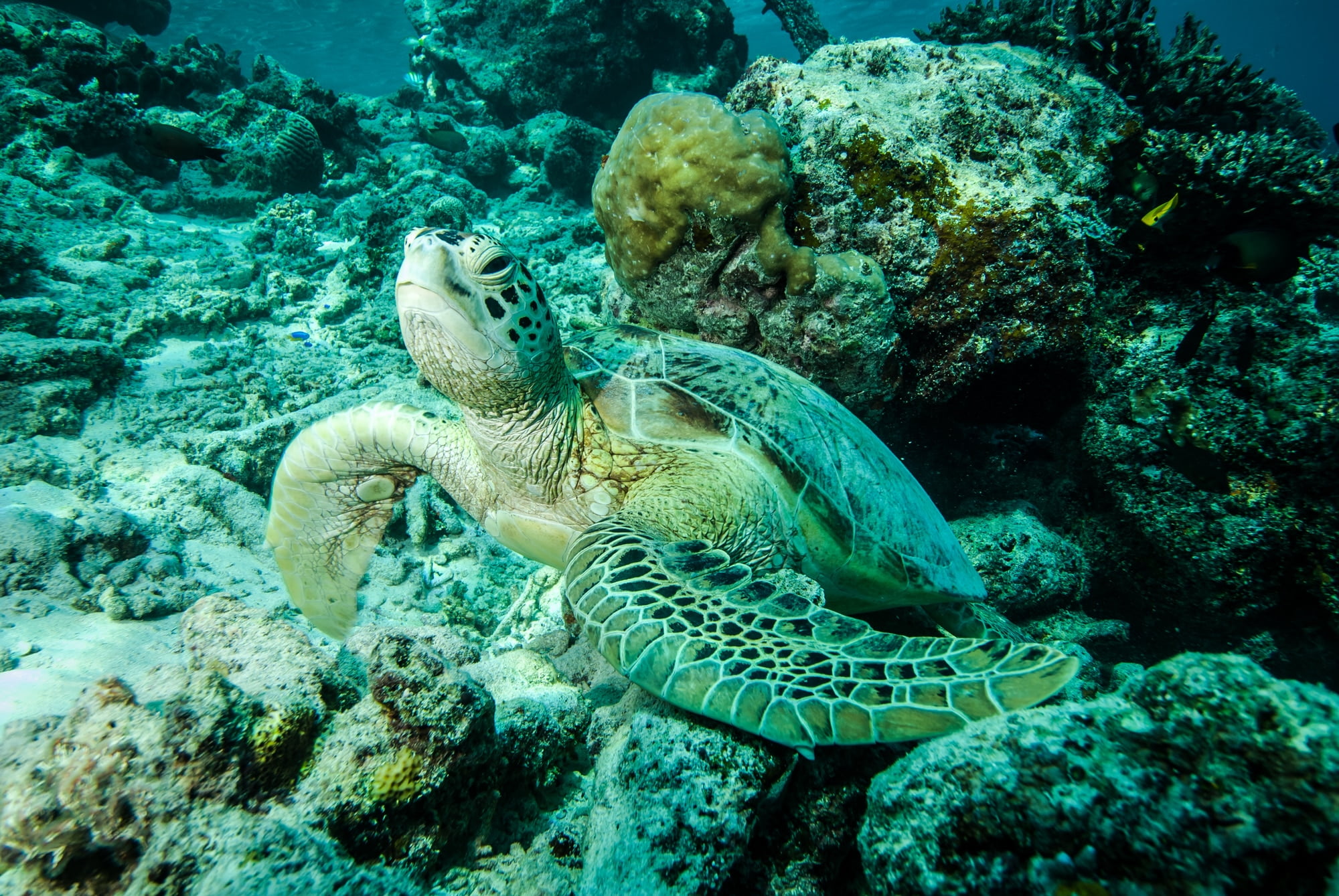Apo Reef, Philippines
The Apo Reef in the Philippines is the largest contiguous reef after the Great Barrier Reef. It covers 67,877 acres off the coast of Mindoro Island and is surrounded by a mangrove forest. The reef was designated a national park in 1996, but environmental problems and overfishing severely taxed the reef. In 2007, the Philippine government enacted a fishing ban in the reef to help restore and preserve it.
Apo Island in the Philippines can be an amazing experience, especially if you love nature, diving, and adventure. Here is some information to help you plan your trip:
Why go to Apo Island, Philippines
Apo Island is a small volcanic island located off the southern coast of the province of Negros Oriental in the Philippines. It is known for its impressive marine biodiversity, making it a popular destination for divers and snorkelers. The island is surrounded by protected marine areas, which have contributed to the preservation of vibrant coral reefs and diverse marine life.
What to see and do in Apo Island, Philippines
Diving and snorkeling: Apo Island is famous for its spectacular diving sites where you can see turtles, schools of fish and various coral formations. Snorkeling is also fantastic and offers the opportunity to explore the marine wonders in shallower water depths.
Hiking: The island has scenic trails that lead to the island’s highest point. Hiking up the hills rewards you with panoramic views of the surrounding sea and countryside.
Turtle Sanctuary: Apo Island is known for its turtle conservation efforts. You can visit the turtle sanctuary and experience these majestic creatures up close.
Beach Relaxation: Enjoy the calm and pristine beaches of the island, perfect for relaxation and rest.
Transportation from Manila to Apo Island
To get to Apo Island, you must first travel to Dumaguete City in Negros Oriental, which is the starting point for the trip to Apo Island. From Manila, you can take a domestic flight to Dumaguete City. The flight time is approximately 1.5 hours. Once in Dumaguete City, you can take a tricycle or taxi to Dumaguete Port and then take a boat ride to Apo Island, which takes about 30-45 minutes.
Best places to dive in Apo Island
Chapel Point: Known for impressive coral formations and the opportunity to see larger marine life such as barracudas and sharks.
Rock Point West: A great spot for stream diving and sea turtle watching.
Mamsa Point: Offers diverse marine life and vibrant coral reefs. It is also common to see sea snakes and rays here.
Coconut Point: Known for its steep wall and abundant marine species, including schools of mackerel, clams and shoals.
Accommodation on Apo Island
Apo Island offers a variety of accommodation options, from budget-friendly guesthouses to more luxurious resorts. Some popular places to stay include Apo Island Beach Resort, Liberty Lodge, and Mario Scuba Diving and Homestay.
Animals to see on Apo Island
In addition to the marine life during diving and snorkeling, you can also come across various land animals on the island. These include geckos, monitor lizards and various bird species. Of course, the highlight is the opportunity to see sea turtles while snorkeling or diving.

Green sea turtle resting on the reefs
What you should pay attention to:
Conservation efforts: Apo Island takes its marine conservation seriously, so visitors should follow the rules and guidelines set by local authorities. Do not touch or disturb marine life and avoid stepping on the coral reefs.
Electricity and Connectivity: Apo Island may have limited electricity and internet connectivity, so be prepared for a more rustic experience.
Weather: Keep an eye on the weather forecast as typhoons can affect the area in certain months.
Cash: Bring sufficient cash as there may be limited access to ATMs on the island.
Remember to respect the local culture and environment during your stay and you are sure to have a memorable and rewarding trip to Apo Island, Philippines!
On Apo Island in the Philippines, there is a rich variety of marine and other animals. Here are some of the specific species you can expect to find:
Sea animals:
Green sea turtles (Chelonia mydas): Apo Island is known for its significant population of green sea turtles. These majestic turtles can be seen while diving and snorkeling.
Smooth-fronted sea turtles (Eretmochelys imbricata): Apart from the green sea turtles, there are also chances of encountering smooth-fronted sea turtles, another endangered turtle species that visit the island’s waters.
Colorful fish species: The clear waters around Apo Island are home to a wide variety of fish species, including damselfish, angelfish, butterflyfish, clownfish, groupers (cod fish), and many more.
Giant clams: Giant clams (Tridacna) can be seen on the island’s coral reefs. These large and colorful clams are an impressive sight.
Eels: There are different types of eels, such as moray eels and ribbon eels, which are often seen hidden in reef crevices and coral formations.
Sharks and rays: Although relatively rare, reef sharks (e.g. whitetip sharks) and rays (e.g. eagle rays, bluespotted rays) may be encountered while diving.
Nudibranchs: The colorful and exotic sea snails, known as nudibranchs, are found on the island’s coral reefs and display an impressive variety of colors and patterns.
Relevant links to travel to Apo
Interesting places to visit in the Philippines
Tubbataha Reef, Philippines: A Scuba Diver’s Paradise
Palawan – The Last Ecological Frontier of the Philippines
Boracay, the Shangri-La of the Philippines
Diving on Apo (new or direct link to local diving websites)




